If there is one thing that everybody wants more of, it is money. Acquiring the money is one thing, hanging on to it is another; and if you want to keep your cash you’ll need to store it safely.
How does a smart, well-adjusted person completely in touch with modernity store large amounts of cash, you might be asking rhetorical purposes? Easy! You just stash it all in the bank, safe and sound!
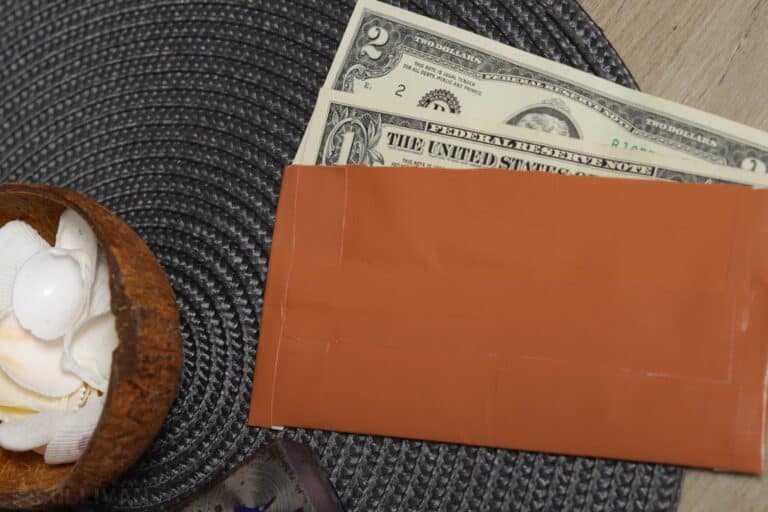
Except what happens when you need to access that money quickly and on demand because things in your life have taken a bad turn and are going worse?
Most banks interview you like you are some kind of criminal when you want your money back from them in any quantity. Worse yet, the chances of a bank actively stealing from you are low but never zero.
For us preppers, staying on the bounce and ready to react to difficult, changing circumstances is a mandate and that means we’ll need to have our “nest eggs” within reach when things get scary.
That means banks are out, but keeping large quantities of cash in your home makes it very vulnerable to loss and theft. You’ll need to store it and store it safely if you’re going to rely on it as a prep. I’ll be sharing with you some proven techniques today so you can do exactly that.
Table of Contents
Should You Stash Your Cash?
If you are a prepper, you had better have a stash of cash, just like you better have a stash of food, medical supplies, clothing, and everything else you’ll need when society goes four legs to the sky.
Don’t let anybody tell you otherwise: having cold, hard cash on hand will get you what you need when credit cards, debit cards and other forms of electronic currency fail. And fail they will, dependent as they are on an increasingly frail infrastructure.
It is always a bit of a surprise to me how many preppers omit this essential component of their preps. I get it, I suppose as if things get bad enough and society well and truly implodes paper currency will only be worth using as toilet paper or tinder and not much else.
However, with a capital ‘H’, there is a whole, whole lot of room between “localized emergency” and “society toppling SHTF event”. In that space, cash will get you goods that you desperately need, expedite services and limited resources or even buy you a favor that you cannot get any other way. As they say, money talks.
You want to have a stash of cash on hand so that you will have that capability at your fingertips and won’t have to resort to clunky and significantly more difficult bartering with goods that you have that the person you’re negotiating with may or may not need at all. Everybody needs cash, and everybody, always, wants more of it.
You make a good point. Not to worry, I have a safe!
Hold up there, partner! You are wise to have a safe for your valuables, be it guns, jewelry, or anything else. When you need to keep prying hands and eyes off of your goodies, be they dodgy relatives or just honest-to-goodness burglars, a safe is a good choice.
However, I have learned through a long career that most safes aren’t anything even close to deserving of the term. In fact, your safe might be a little more than a vaguely portable loot box for truly determined thieves!
It’s true. Most modern safes aren’t even called as much, and are instead referred to as “residential security containers”, containers easily being broken into with commonly available power tools or even hand tools and some sweat equity.
Any small safe that is not strongly anchored to the floor or wall will just be carried away by thieves assuming they can’t get into it on site, but whatever the case a safe tells a thief the same thing in any language: goods within.
It won’t do you any good, however, if you stash your cash inside a safe only to see it broken into at the onset of an event or card it away entirely. That just would not do.
Now, if you’re safe is properly designed, made of top quality materials, and anchored to the structure of your home correctly, be my guest, but don’t think you can stick your cash in commonly available gun or strong box safes and rely on it being there when you need it.
Your Dependable Plan B for Safely Storing Cash
If you want your cash out of sight, out of mind, and safely out of the hands of those who would steal it from you, you are going to need some creativity.
I am talking about stashing it in proper hiding places, places where people wouldn’t even think to look and even if they did they would have to invest too much time and effort trying to find it.
Now, compared to just tossing a brick of bills in the safe, utilizing a good hiding place for your money means you’re going to have to work harder, both to stash the cash and to access it when you need it. Some of these methods also entail a little bit of risk, as paper currency is vulnerable to degradation and destruction.
If you are employing a riskier method of hiding your cash, consider breaking it up into two or more batches. You might hide one in a location that is safer and easier to access and hide the other in an area that is truly hidden, and secure, but riskier.
Where To Store Your Cash Safely
Here’s a quick table of all the places you can store it in. We’ll delve into some of these right after the table.
| inside a fixture | inside a book safe |
| inside a decoy container | hidden compartment |
| bury it | in the toilet tank |
| potted plants | piping |
| spare tire | inside couch cushions |
| chair bottom | fish tank |
| cat litter box | ceiling |
| inside tennis balls | old shoes |
| inside picture frames | fake electric outlet |
| bottom of drawer | in the freezer |
Option #1 – Hide it in Plain Sight
One exceedingly devious way to hide your cash is to hide it, but without hiding it. What kind of weird, Sun Tzu wisdom is this!? I’m talking about hiding your cash in plain sight, in a place where no thief would think to look for valuables.
Think about it: when people hide valuables, what do they do? They typically put it under or inside something typically used for storing valuables, like a sock drawer, or they stash it in some strange and out-of-the-way crevice, like inside a bedpost or something.
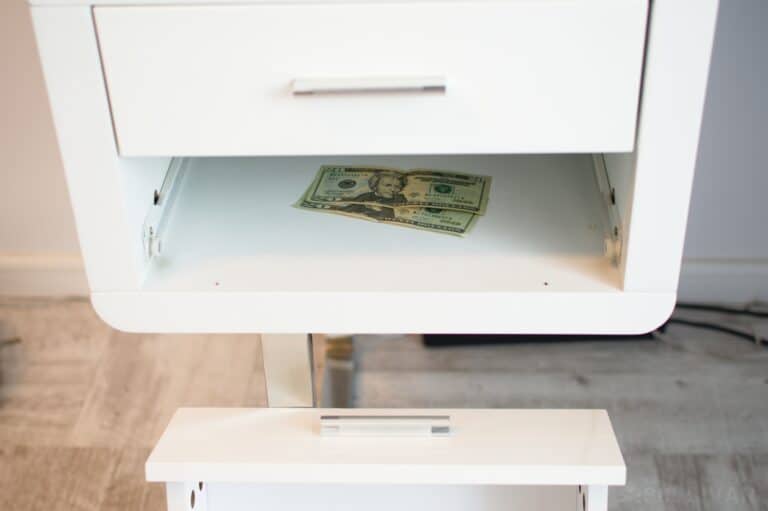
This method takes the opposite approach, relying on something like an empty bag of chips in your pantry or a hollowed-out casserole box in your freezer.
Even if you don’t have or can’t make a hollowed-out casserole, the freezer is definitely a place where most thieves won’t bother looking.
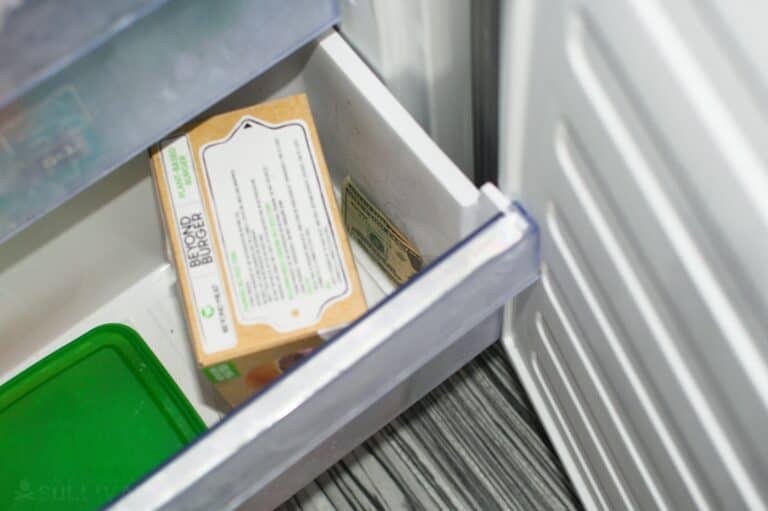
These are things with no inherent value that are effectively invisible sitting there innocently on the shelf. The trick is to make sure neither you nor anyone else accidentally throw them away!
Another excellent option is to bundle your money in something like a Ziploc bag and then hide it beneath dirty laundry in a hamper or underneath a pile of boxes sitting near the garbage.
There are very few thieves who would ever think to look through such places, much less actually go through the motions when they have many more high percentage hiding spots to try.
Now is the time to let your imagination do the work!
Option #2 – Hidden in a Fixture
One of the very best hiding places that you can make use of for secretly storing a small bundle of cash is one that works just as well whether or not you live in a house, an apartment, or anywhere else.
I’m talking about the classic fixture concealment. The fixture concealment is exactly what it says, hiding your cash inside or behind some utility or appliance in your home.
This could be behind a light switch or outlet cover, stashed behind plumbing access, inside a vent or register in a wall or ceiling-mounted light, or in any number of other places.
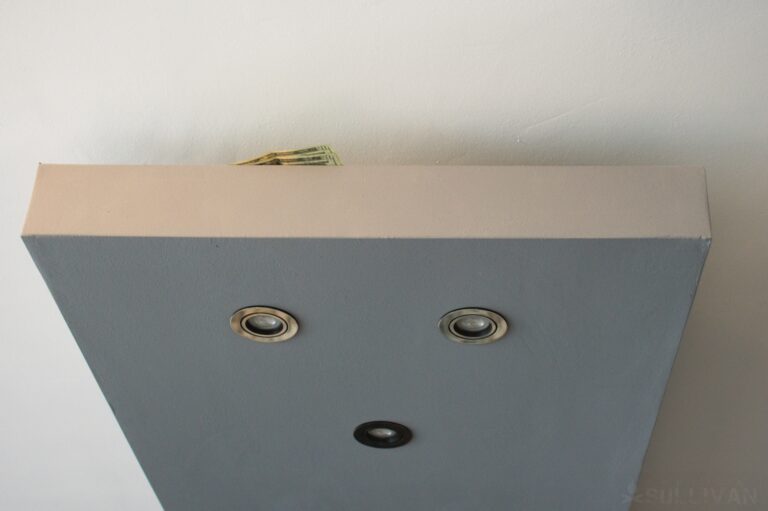
You can also take this concept even further by installing a dedicated fake fixture, one that is not functional or otherwise operational, unlike others in the home. Only the most astute or thorough thieves will locate money hidden in this way.
This is another great opportunity to allow your imagination to inform your choices, as the only thing you really need to worry about is safety, both for yourself and for the cash you are hiding.
Always use caution when accessing any electrical components and make sure your money will not come to any harm or cause harm to an existing system. With just a little bit of care, a fixture concealment can be a secure hiding place that is still reasonably quick to access.
Option #3 – Use a Book Safe
The book safe is a classic hiding place that has a cult reputation in fiction and in real life. You can buy reasonably convincing book safes that are essentially small containers that sort of look like books on the outside, but a much better bet is to make your own using a real book that will blend in naturally with other books in your library.
Obviously, if you are a book lover this method might not be for you, but it is always possible to come up with a book that is otherwise worthless and bound for the trash to use for this project.
Making a book safe is doing little more than cutting a hole through the pages of the book to form an open compartment or cubby on the inside.
You can make them as intricate or as simple as you want, and some people take the time to glue the pages together into a solid mass and then carefully line the interior with velvet or some other lining but this is not strictly necessary, especially for hiding cash.
So long as the book is of the right size, subject and patina it will blend in seamlessly on any bookshelf.
Now, something you must know is that the popularity of this idea both in fiction and in life means that seasoned thieves know about it, and will quickly rifle through a bookshelf to find a book safe.
If you don’t have a large library or multiple shelves at your home this means you might only be able to rely on a book safe for keeping regular guests and otherwise “honest” people from finding your cash.
However, a house with many bookcases means that a single book safe hidden somewhere among all the other titles turns finding your cash into a figurative search for a needle in a haystack.
Option #4 – Decoy Container
A decoy container is a clever concealment, but one that works by letting the thieves find exactly what they are looking for. In essence, you are hacking both their perceptions and their expectations.
A decoy container sometimes called a decoy safe, is simply a lock box, small safe, or anything else that might be used to contain valuables that will in fact contain valuables, (or convincing facsimiles thereof) that we will leave for our thieves to find whether or not we have it set out in the open or lazily hidden so that it will be found readily and quickly.
The trick to getting success with a decoy container is to make it convincing: Stronger containers that are unlikely to be broken into on the spot should have soft stacks of paper or fake bills inside along with rattly, clangy jewelry or coins.
The additional heft and the auditory clues will convince a thief that he has hit the jackpot, and hopefully he will leave convinced that his job is done.
A container that is easily opened or broken into at the instant should have convincing but fake jewelry or precious metals inside, along with a small quantity of cash that you are willing to sacrifice for the purpose.
Naturally, this decoy is at worst a small sacrificial lamb, and at best completely worthless, all the while you have your real treasure hidden elsewhere using any of the methods described on this list. Executed well, a decoy container is one of the very best methods for keeping your valuables safe from theft.
Option #5 – Hidden Compartment
The one concealment option that every prepper should aspire towards owning is a legitimate hidden compartment built somewhere inside their home. A hidden compartment is a purpose-made hiding spot for your valuables, including cash, and can be installed into the floor, in the ceiling, or inside the walls.
The best-hidden compartments will have an eccentric or secured method of opening and will be made with such craftsmanship and care that they are completely undetectable when closed.
As you might expect this typically takes expert care to pull off, at least if the hidden compartment is nominally in the line of sight when someone is in the room.
Cracks, crevices, seams, wear and tear, scuffs, paint, and trim must all be absolutely perfect if you don’t want it to get noticed by a sharp thief or curious visitor. However, when done right nothing even comes close to rivaling a hidden compartment in security and convenience.
This is one concealment that you are unlikely to make on a whim unless you have some serious DIY chops, but if a true hidden compartment sounds like the right answer to you start studying and practicing construction techniques now.
Option #6 – Bury your Treasure!
Sometimes all you can do is make like a pirate and bury your treasure. At least, everyone thinks of pirates when they think of buried treasure but believe it or not, the burying of currency, including paper money, has been in use by all kinds of people all over the world for ages.
This method involves hard work, and an awful lot of inconvenience when you want to access your cash, but like the hidden compartment method above when executed properly it is virtually undetectable.
Now, burying precious metals or coins is one thing, but burying paper money is another since it is far more vulnerable to degradation and rot than the former. You’ll need to stack your cash, and sure that it is completely dry, and then vacuum seal it inside a heavy-duty Mylar bag.
The next step is placing the bag of money in a heavy-duty, leak-proof container that you’ll then bury sort of like a time capsule. PVC piping is one popular option but others abound.
Then you’ll need to figure out where you’re actually going to bury your money, and this can often be the hardest part of the adventure.
You really need to think this through, since your hiding place must be accessible but also hidden enough so that eavesdroppers won’t see you burying or accessing the cash and also so that it won’t run the risk of being lost entirely due to flooding or new construction.
If this sounds like a lot of work that is because it is, but burying money in the right place using the right means is a highly secure method of keeping it out of someone else’s sticky fingers. Don’t let this involved and laborious process deter you!
Option #7 – Toilet Tank
I know it sounds bizarre, and maybe it is, but one of the best places to hide your cash or anything valuable if you want to keep it away from sticky fingers, prying eyes and outright thievery is in the back of your toilet tank.
Most visitors to your home are not going to mess with your toilet at all, and those that do will simply want to do their business and leave the bathroom. Thieves are also unlikely to look in the tank as a place for valuables since it is so incongruous and is also a wet location.
This presents some challenges to keeping your cash dry and undestroyed, as you might expect. water is the ultimate solvent, and though money is fairly resistant to becoming wet it is far from invulnerable.
Your best bet will be to use a high-quality, tightly sealing zipper bag or some other utterly waterproof container for storing your money.
Then all you need to do is place it in the back of the tank well away from the drain and in a way that it will not bob around or interfere with the tank kit responsible for flushing and refilling your toilet.
You’ll obviously want to check on your money fairly regularly to determine if the bag or container has been compromised, but it is possible to use a color-changing moisture-detecting strip inside the bag to make visual verification quick and easy just by lifting the heavy, ceramic lid off of the tank.
Option #8 – Potted Plant
This technique has a little bit in common with the previous one, hiding your money in the toilet tank. For one, it is a completely unexpected, novel location that no visitor and very few thieves will ever be expected to come across or discover. Also, like the toilet tank, it hides your money in plain sight.
Lastly, this is a “semi-wet” location, at least if you have live plants that you actually take care of! You will want to water them to keep them alive, after all.
No, depending on the style of pot, the type of plant and the amount of money you want to store you might be able to lift the plant out of its pot entirely, root ball, dirt and all, before placing your money in a tightly sealed plastic bag or other waterproof containers below, prior to replacing the plant.
Alternatively, if you have lots of room to spare in your planter you could just dig into the soil a little bit before emplacing the packet of money.
This is one of the few strategies that has some viability for keeping cash outside in an easily accessible location. This presumes of course that the plant does not get stolen and that you can account for other serious hazards like torrential rainfall or flooding, or insects and small mammals that might get after your plants and the soil surrounding them.
You can even use this strategy with fake plants so long as they are easy enough to remove from their pots.
If they aren’t, you might be able to modify the plant or the pot in such a way that you can create a sort of secret compartment. In all cases, don’t forget about your money if your plant dies or you otherwise decide to throw it away!
Option #9 – Basement or Crawl Space Piping
One of my very favorite hiding places for a large amount of cash is in a basement or crawl space pipe, either a genuine one or a dummy that you can rig up with a section of pipe of like kind and a few fittings.
Depending on the type of pipe, the size of the pipe, and where it is located, one clever but rudimentary trick is to tape or magnetize a bag or other container with your cash in it to the underside or back side of a pipe that is totally out of view from anyone who might see it.
This keeps the cash easy to access, and it is reasonably secure so long as you are confident that no one would have any reason to stand in a place where they would have a line of sight to the stash or any other reason to check behind the pipes.
Another, more sophisticated variation on this technique is to obtain a section of pipe that matches whatever kind is present in your hide location.
Then simply use techniques similar to the creation of a fixture concealment or decoy safe above to craft a compartment complete with fittings to make it look like just another pipe among many.
Remember if the pipes are going to be in a crawl space that is only a half step removed from being outside the home, so you should take extra measures to protect the cash from moisture, insect attack, and other hazards. Waterproof and airtight environment cases are your friend for this sort of duty.
Where You Don’t Want to Hide your Cash
We have just learned some highly effective and adaptable places for hiding a large or small amount of cash in and around your home. That being said, there are some hiding places that are, at this point, anything but.
Maybe they are cliched, common knowledge or just entirely known to the criminal element. In any case, don’t hide your cash in any of these spots unless you want to dramatically increase the chances that it will go missing.
Old Purses
Time and time again I have watched women that I know accumulate a collection of old purses. Maybe they don’t want to throw them out, maybe they wear them at different times of the year, or maybe they just haven’t gotten around to having that yard sale.
For whatever reason, these ladies and sometimes the men in their lives think that a random pouch or pocket in this pile of old purses it will somehow go undiscovered by thieves.
It won’t, as any thieves worth their salt will happily scoop up the entire pile to rifle through it later at their leisure, and keep in mind that many name-brand purses are themselves highly valuable.
Perhaps worse, when ladies do get around to paring down their purse collection the cash can be forgotten about and donated to the lucky purchaser for them to find later!
Hanging Clothing
This is another method that has been successful over the years, but now is such a well-worn and moth-eaten trope that absolutely everyone, including thieves and sticky-fingered relatives, knows about it.
You should not hide any amount of cash in an envelope or other flat container inside clothing that is hanging up in your closet. Yes, to us it might seem like a dandy hiding place considering how crowded our closet is and how many potential pockets there are to sift through.
Regrettably, thieves know to check here and many are almost supernaturally skilled and discerning the presence of unusual shapes, textures, bulges, and so forth through the fabric of clothes with a cursory pat down.
If you want to stash your cash here, in a pocket, or elsewhere in your clothing, it is likely going to go missing should a break-in occur.
Under the Mattresses
Very much like the above example, this hiding place is cliched beyond belief, and believe me that this is the very first place a thief will check upon entering the bedroom.
And don’t think you are slick by hiding it inside a slip or flap of fabric: They know what to look for, and they will find it.
Couch Cushions
This goes right along with keeping your cash in mattresses. This is a tired, tired trope, one that everyone knows about.
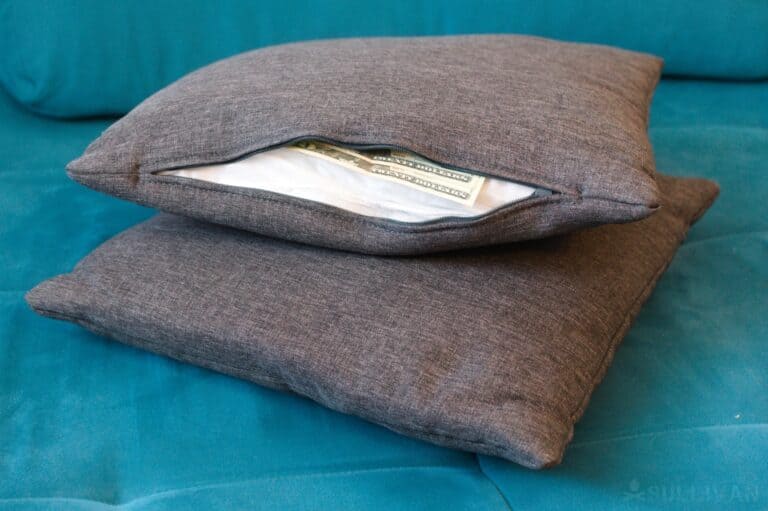
Whether it is under the cushion or inside the zipper on the back side of it, thieves will check here, and it is not out of the question that guests could discern the presence of an object inside or under the cushion when sitting on your furniture.
That is the kind of attention that you definitely don’t want on your stash of cash!
Should You Just Keep Your Money in the Bank?
After reading all of this, you might be wondering if you should just keep your money in the bank where it supposedly belongs. There are pros and cons to this.
As mentioned above, cash is always vulnerable to theft or destruction, and losing a very large amount of money to a natural disaster, robbery, or mishap at your home is a punch in the gut on top of everything else you’ll be going through.
That same money in the bank, or rather in the bank’s computers in the form of electronic ones and zeros, is proof against pretty much everything except societal collapse or an EMP. Up to a certain amount, your money is further insured by the FDIC.
Now, your bank account might not help you during an emergency or time of crisis. A power outage, national emergency, declaration of martial law, or any other such happenings might prevent you from accessing your cash entirely, in any amount, but particularly larger withdrawals.
As was mentioned, you can make a great case for keeping some of your money in a bank as a hedge against theft or physical laws and some of your money stashed, well hidden, on hand at your home so you know you can access it the instant you need it.
Conclusion
Keeping a good chunk of cash close at hand is a good idea and important prep. You cannot depend on a bank to make your cash accessible when you need it right away.
However, paper and hard currency are always vulnerable to theft and loss, so it is a great idea to employ a variety of unique storage solutions and hiding places to keep your cash safe and sound. Use the options we have provided on this list and you’ll be sure to have at least a couple of spots you can depend on.
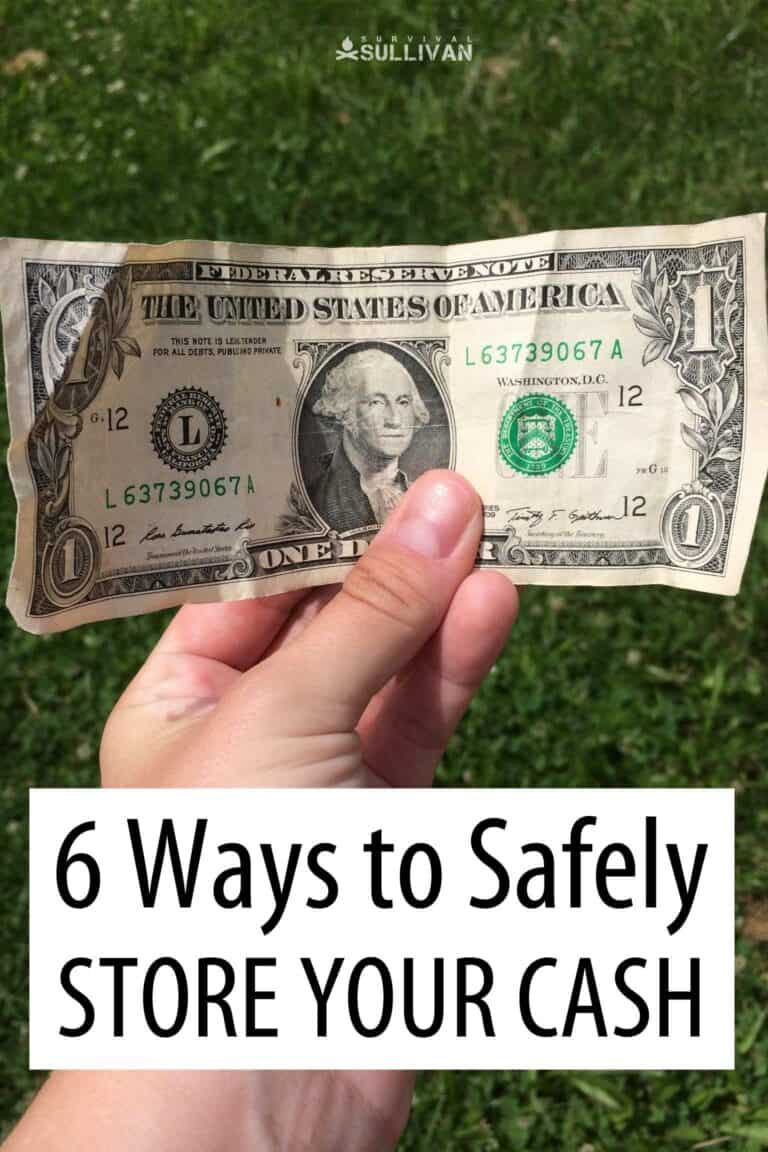

Tom Marlowe practically grew up with a gun in his hand, and has held all kinds of jobs in the gun industry: range safety, sales, instruction and consulting, Tom has the experience to help civilian shooters figure out what will work best for them.

Great article! I wish you make it possible to store as a PDF. Other articles as well.
David,
There is a Print button at the bottom of each article and clicking it allows you to save as PDF.
Just make sure that you’re not the only family member ( trusted family member ), that knows where the stash of cash is hidden. In case something should happen to only the person who hid the money, it could be tossed out, destroyed accidentally, or sold along with an object or even the house down the road. People can get sick, injured or even die…and the secret hiding place or places goes with them if no one else has this pertinent information.